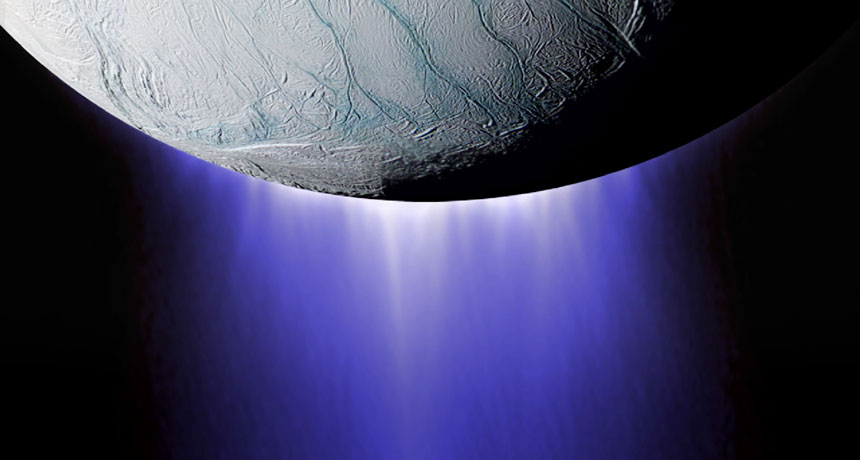Food for microbes found on Enceladus
Hydrogen in plume suggests hydrothermal activity on Saturnian moon

FINDING FOOD A deep dive into Enceladus’ plume, shown here in an artist’s illustration, reveals that the moon harbors molecular hydrogen. On Earth, the gas serves as a food source for some microbes, suggesting life could exist on Enceladus, too.
JPL-Caltech/NASA







